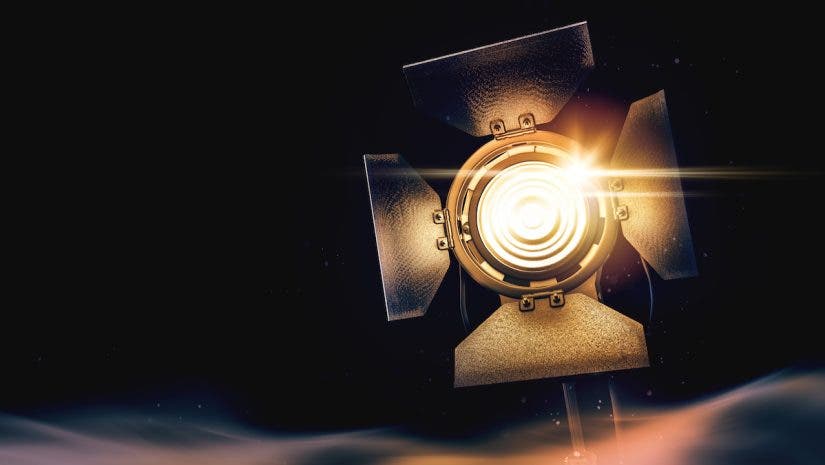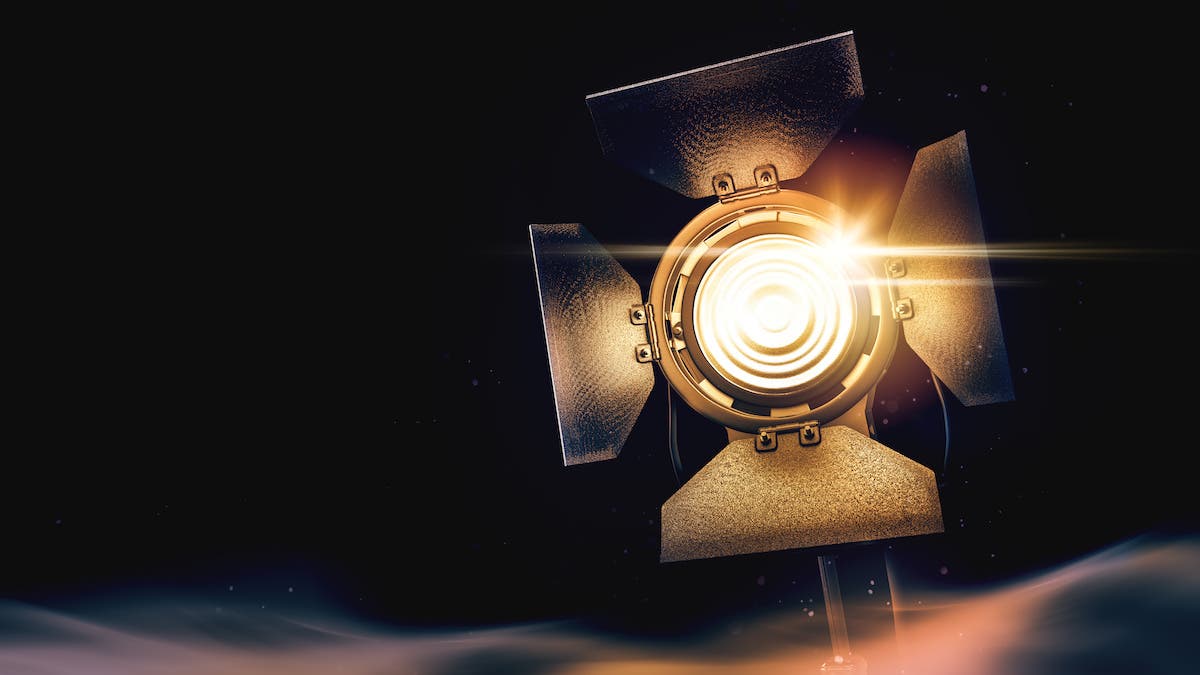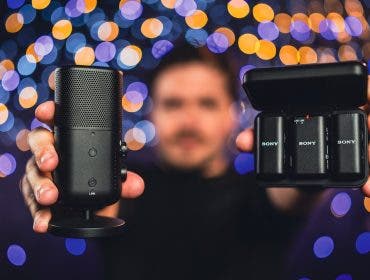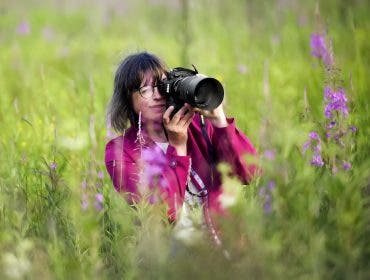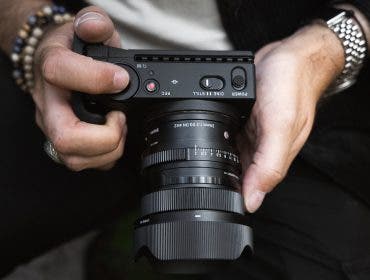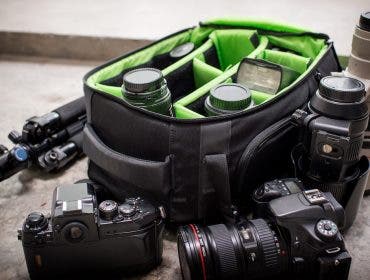In the vast world of lighting, few fixtures have stood the test of time like the Fresnel light. A staple in film, television, and theater, Fresnel lights offer a unique design and versatility, making it a favorite among professionals. But what exactly is a Fresnel light, and why is it so revered? Let’s explore the intricacies of this lighting marvel, its power range, ideal use cases, and the pros and cons it brings.
What is a Fresnel Light?
Fresnel lights are specialized lighting fixtures, named after French physicist Augustin-Jean Fresnel. At its heart lies the Fresnel lens, characterized by its unique concentric circle design. This lens efficiently focuses light output, producing a sharp yet soft beam.
Unlike standard production lighting, Fresnels offer adjustable focus, allowing a seamless transition from spotlight to floodlight. This is generally achieved by moving the lamp closer to, or further from, the lens. This combination of adjustable focus and soft light quality sets Fresnel lights apart from other fixtures.
Internally, Fresnel lights allow better ventilation, ensuring the fixture doesn’t overheat, especially in models using high-wattage bulbs. The rigid design of the lens also reduces its weight, making it more manageable and versatile for various lighting setups.
Often accompanied by barn doors, these lights are designed with precision, making them a go-to choice for many in the entertainment industry.
Fresnel Light Power
Fresnel lights come in a diverse range of power outputs and color temperatures. Starting as low as 150 watts, suitable for intimate scenes or close-up shots, they can reach up to a whopping 10,000 watts or more, perfect for illuminating large sets or outdoor locations. This wide wattage range provides filmmakers and photographers with immense flexibility, ensuring the right intensity for every scene.
Color temperature, on the other hand, determines the warmth or coolness of the light. Fresnel lights typically range from 3,200K (warm, tungsten light) to 5,600K (daylight). Some modern Fresnel lights, especially LED variants, offer adjustable color temperatures, allowing users to dial in the appropriate mood for their shots.
ARRI Orbiter Fresnel Lens
The ARRI Orbiter Fresnel Lens is a testament to ARRI’s commitment to innovation and quality. This lens transforms the ARRI Orbiter into a precise spotlight, producing a soft shadow like traditional Fresnels. Its output rivals the ARRI L-Series LW and True Blue 5T2/3 with a 2000W Tungsten bulb.
Despite its large aperture, it’s compact and versatile for diverse scenarios. With a 15 to 65-degree zoom range, it can spotlight subjects or flood a room. The motorized zoom, controllable remotely, combined with the ARRI Spectra light engine, is ideal for cinematic ventures. The LED display indicates the zoom angle, and the Quick Lighting Mount ensures easy adjustments.
Litepanels Sola 6+
Venturing into the realm of LED Fresnels, the Litepanels Sola 6+ offers a color temperature range of 3200K to 5600K, with a power draw of 104W. This energy-efficient model is popular among documentary videographers.
If they’re getting coverage of a local fair or carnival, the adjustable color temperature allows them to match the ambient light, whether shooting under a tent or in the open. This ensures artisans and their crafts are showcased in true-life colors.
FL-35 Fresnel Lens for Evok 1200 LED Light
The FL-35 Fresnel Lens for Evok 1200 LED Light transforms the Evok 1200W into a powerful Fresnel light source. Ideal for filmmakers who require precise light control, this combination can be used to spotlight a subject or to cast controlled beams in specific areas.
For instance, in a television drama with an indoor scene where a detective interrogates a suspect, the FL-35 can be used to focus light on the suspect’s face, emphasizing their reactions and adding intensity to the scene.
In essence, the choice of Fresnel light, whether from ARRI, Litepanels, Nanlux, or any other manufacturer hinges on the specific requirements of the project. With the right light, filmmakers and photographers can transform their vision into captivating reality.
When to Use a Fresnel Light
Known for its unique design and adjustable focus, the Fresnel light has proven to be highly useful in a wide range of real-life shooting scenarios.
Theater Productions
Picture a dramatic climax in a play where the lead character delivers a powerful monologue. A Fresnel light can be adjusted to spotlight this performer, isolating them from the rest of the stage and drawing the audience’s full attention. As the scene transitions to a full ensemble number, the same Fresnel can be broadened to flood the stage, ensuring every performer is well-lit and pops off the background.
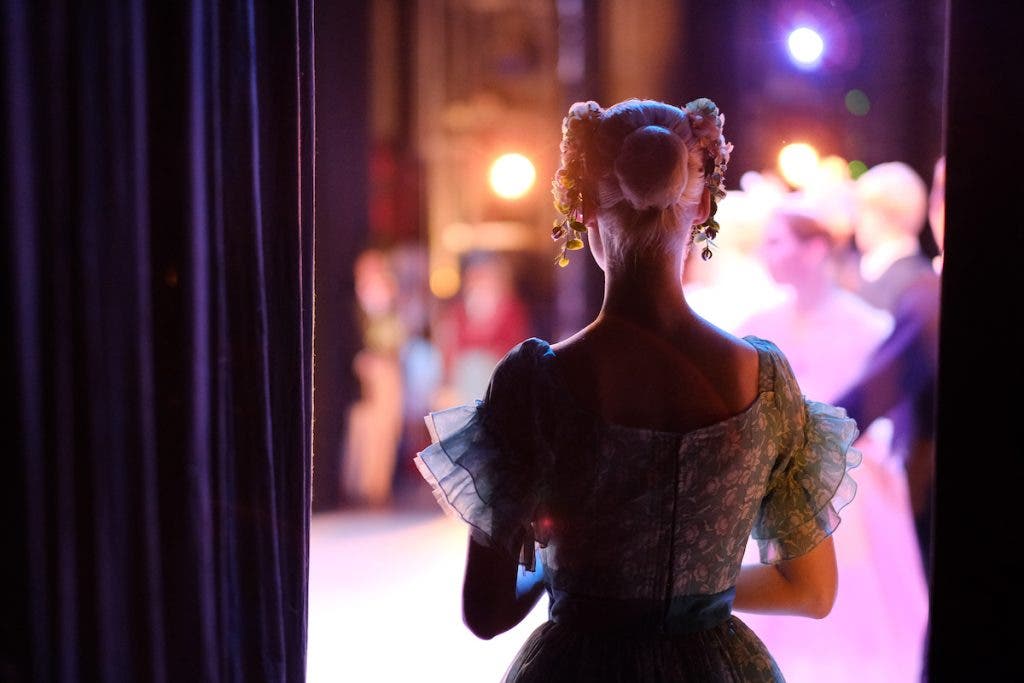
Outdoor Filmmaking
Filmmakers often have to contend with unpredictable natural light; for example, shooting a scene at dusk when natural light is fleeting. A high-wattage Fresnel can replicate the setting sun, maintaining consistency across shots and ensuring the scene retains its golden hour glow.
Better yet, imagine shooting a cozy indoor scene. A Fresnel with a lower wattage and warmer color temperature would be ideal, replicating evening light’s soft glow. Conversely, for a bright outdoor scene under the midday sun, a higher-wattage Fresnel with a cooler color temperature would be the right choice.
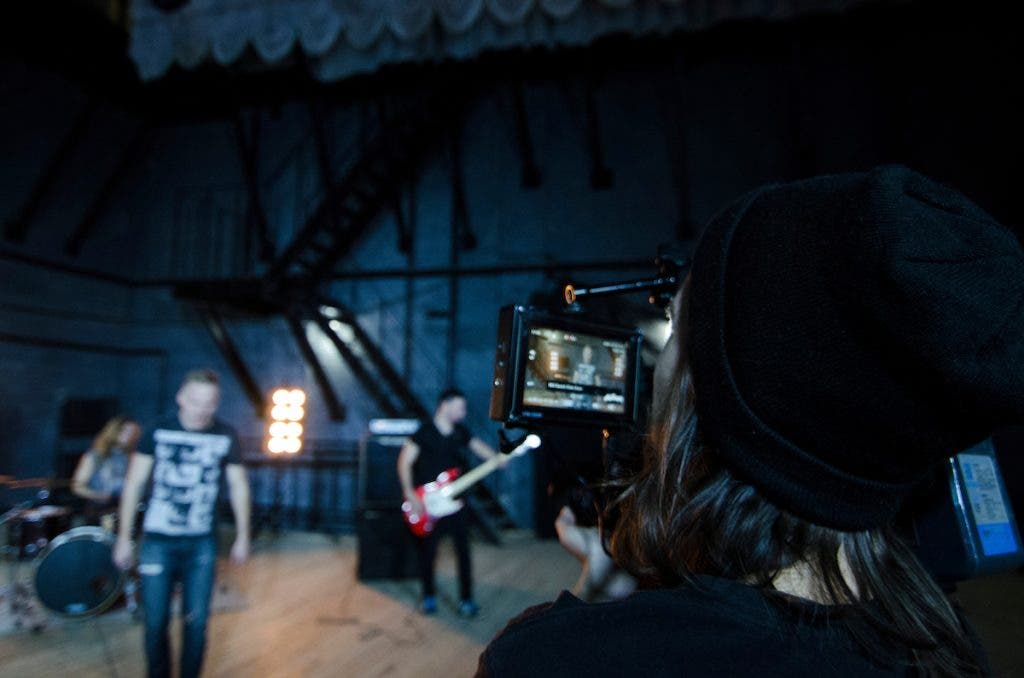
Music Videos
In a high-energy pop music video, a Fresnel can be used to create dynamic lighting effects. As the beat drops, the light can be focused and intensified on the artist, creating a dramatic effect that amplifies the song’s impact.
Documentaries
When interviewing subjects, it’s crucial to present them in a clear, flattering light. A Fresnel, with its soft and even illumination, is perfect for this. For instance, in a documentary about a renowned artist, as they discuss their most iconic work, a Fresnel can ensure they’re lit in a way that complements their narrative, setting the mood to help make their story feel even more compelling.
YouTube Channels
If you think about a cooking show, that content creator wants to make sure the ingredients and cooking techniques are visible when demonstrating a recipe. A Fresnel light can be positioned overhead, casting a consistent light over the cooking station, ensuring viewers don’t miss a single detail.
Fashion Photography
In a studio setting, where a model showcases a designer’s latest collection, fabrics, textures, and colors need to be accurately represented. A Fresnel light can highlight these details, ensuring the attire is captured in all its glory.
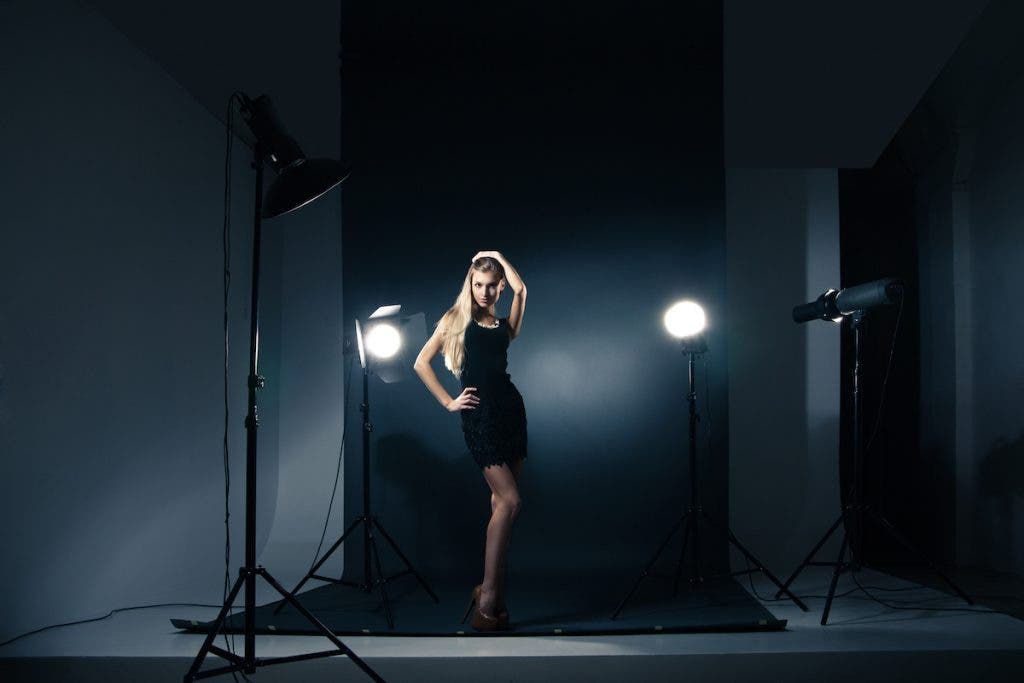
With all of that being said, the choice of Fresnel light comes down to the specific requirements of both the shot and the production as a whole. Thanks to its adaptability and precision, it is a top choice for professionals in a broad range of fields.
How to Use a Fresnel Light
Using the right technique, paired with the appropriate accessories can elevate any production thanks to the Fresnel light’s versatility. Across a wide variety of media, professionals can harness Fresnels’ power in the following ways:
Film
- Three-Point Lighting: This classic setup involves a key light, a fill light, and a backlight. For instance, in dramatic scenes, a Fresnel can serve as the key light, casting the primary illumination on the actor. Other lights fill in shadows and add depth.
- Backlighting: In suspenseful sequences, a Fresnel positioned behind the subject can create a silhouette effect, adding a sense of mystery and tension.
Theater
- Spotlighting: During pivotal moments, like a character’s solo, a Fresnel can be focused to spotlight the performer, drawing the audience’s attention.
- Ambient Lighting: For scenes requiring a general wash of light, Fresnels can be adjusted to flood the stage, ensuring even illumination.
Television
- Talk Shows: Fresnels are often used in talk show setups to ensure hosts and guests are evenly lit, avoiding shadows that can be distracting for viewers.
- News Desks: The controlled beam of a Fresnel can highlight news anchors, ensuring they stand out against backgrounds or screens.
YouTube/Content Creation
- Product Reviews: Content creators showcasing products often use Fresnels with diffusion materials for a soft glow, making products look appealing.
- Vlogs: For YouTubers filming in varied locations, a portable Fresnel can provide consistent lighting, ensuring the creator is always in the spotlight.
- Tutorial Videos: Whether it’s makeup tutorials or DIY crafts, a Fresnel ensures the subject is well-lit, making details clear for viewers.
Fresnel Accessories
- Barn Doors: These adjustable flaps allow precise light direction control. For example, in a moody film noir, barn doors can be adjusted to cast elongated shadows, enhancing the atmosphere.
- Diffusion Materials: Ideal for softening the light, diffusion materials are perfect for close-ups, ensuring subjects look their most stunning.
- Gels: These colored sheets can change the Fresnel’s output color. In a sunset scene, an orange gel can give the light a warm, golden hue.
There is no doubt that Fresnel lights are capable of adapting to almost any setting. Understanding how to use them effectively can significantly improve your production quality, regardless of whether you’re an experienced filmmaker or an aspiring content creator.
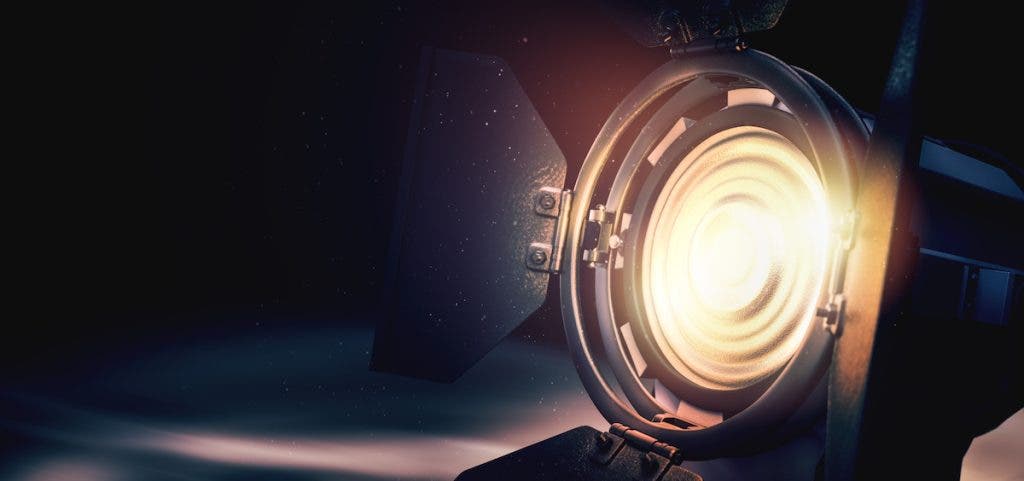
Pros of Fresnel Lights
Versatility: Fresnel lights are known for adaptability. Whether you’re shooting a close-up interview or illuminating a vast stage, the Fresnel light’s ability to switch from a tight spotlight to a broad floodlight is unparalleled.
This means that, with just one light, filmmakers and photographers have a tool that can cater to a myriad of lighting needs. For instance, in a dynamic theater scene that transitions from a solo monologue to a full-cast dance number, a Fresnel can adjust on the fly, ensuring optimal lighting throughout.
Quality of Light: The soft, even illumination produced by Fresnel lights is often the first choice for professionals seeking to avoid harsh shadows or overexposed highlights. This quality is especially beneficial when filming people, where the light accentuates features without being unflattering. The Fresnel ensures the person is seen in the best light—both literally and figuratively.
Control: With accessories like barn doors, filmmakers can shape and direct the light with surgical precision. This control is crucial when achieving specific moods or atmospheres. A suspenseful scene in a thriller, for example, might use a Fresnel with narrowed barn doors to cast elongated, mysterious shadows to heighten the tension.
Cons of Fresnel Lights
Heat Production: Tungsten Fresnel lights are notorious for their heat output. On closed sets or in small studios, this can make the environment uncomfortable. Makeup artists, for instance, often have to do touch-ups because the heat from the lights can cause makeup to run or shine.
Size and Weight: The larger Fresnel models, while powerful, can be cumbersome. This bulk can pose challenges during setup, especially in locations with limited space or when rigging is required. Imagine trying to position a heavy Fresnel on a balcony for an overhead shot—it’s no easy task.
Cost: Quality lighting is an investment, and Fresnel lights are no exception. For independent filmmakers or small production houses, the cost of acquiring and maintaining these lights can strain budgets.
It’s also a wise idea to remember that the larger the bulb, the larger the fixture you need will be. Additionally, high output Fresnels draw a lot of power. So, making sure the electric is in order and considering any generator needs for outdoor shoots should be taken. However, many argue that the results justify the investment.
Final Thoughts
The Fresnel light, with its rich history and undeniable utility, remains a cornerstone of visual storytelling. Its adaptability, combined with the quality of light it produces, makes it an invaluable tool for creators. While it has its challenges, like heat production and cost, the results justify the investment.
As we’ve explored its nuances, from its power spectrum to its varied applications, it’s clear that the Fresnel light is more than just a simple fixture. Instead, it’s a testament to the blend of science and art in the world of lighting. And in that blend, magic happens.
